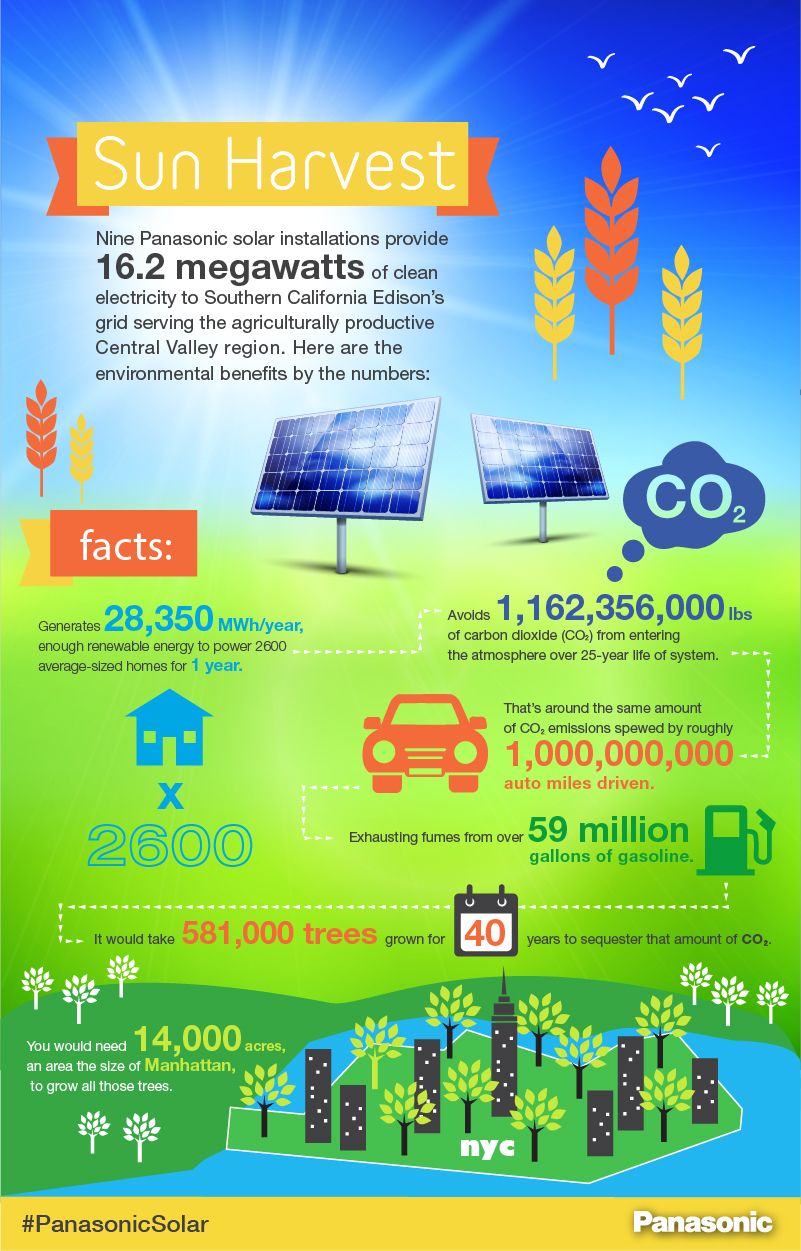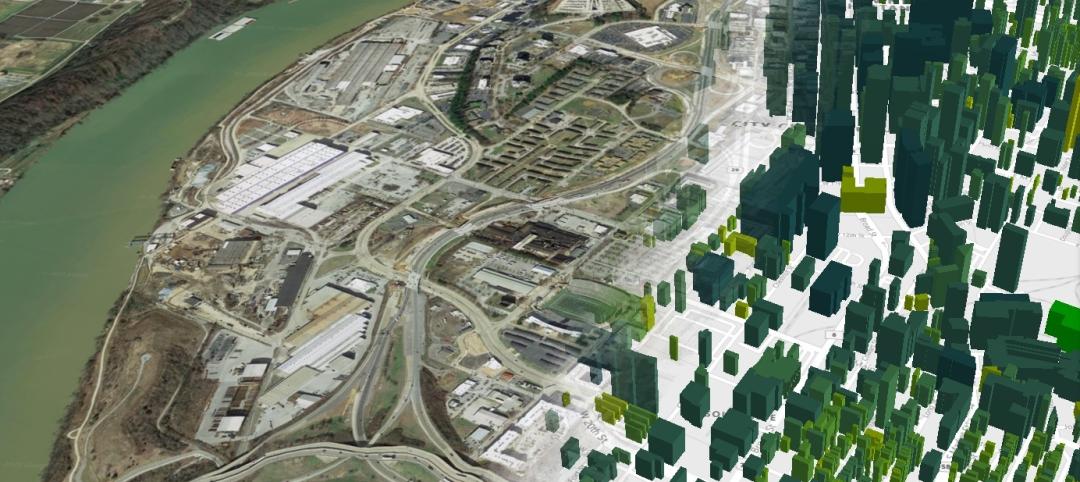As a society, we’re more aware than ever of the difference we can make purchasing smart, sustainable products and the role we can play shifting to cleaner, greener solutions like renewable energy. As we strive to make our own decisions with environmental responsibility in mind, we expect the companies we know and love to do the same.
Universities, shopping centers, sports arenas, charitable foundations, utilities, and beyond are working with Panasonic to develop bold solar solutions. Why? For many, installing solar is the go-to option for meeting sustainability goals, enhancing reputation in social responsibility, and reducing operating costs.
In fact, the Solar Energy Industries Association recently reported that between 2010 and 2014, residential, non-residential, and utility PV market segments grew significantly year over year. At present, there are more than 15,900 MW of cumulative solar electric capacity operating in the U.S. That’s a dramatic amount of renewable sun power and a monumental step forward on the path to cleaner, greener energy.
Sustainability Savings
Last spring, Panasonic completed a 16.2 megawatt portfolio of California Renewable Energy Small Tariff (CREST) projects. Spanning four locations in Central Valley, the systems pack a lot of power and are prime examples of the real-life benefits of going solar. Over the life of the combined systems, more than 580,000 tons of carbon dioxide will be eliminated. Here’s a peak at what that looks like in…
Waste. Unfortunately, waste is an everyday reality, but what we do with it can make a world of difference. Recycling programs across the nation have helped our communities become more sustainable. While these programs play a crucial part in the “greening” of our society, to reach the level of CO2 eliminated by the Central Valley portfolio it would take recycling 1,836,513 tons of waste.
Trees. Trees purify our air, absorbing CO2 through the process of photosynthesis. The amount of CO2 eliminated by the Central Valley solar systems rival the work of more than 13,541,378 trees. That’s a lot of green.
Households. Unfortunately, the safe haven where we rest our feet and sit down to an evening meal is actually a leading producer of CO2 due to its high consumption of electricity. To reach the level of emissions reduced by Panasonic’s solar installations, you’d have to displace CO2 from the annual electric use of 65,893 homes.
Gasoline. We all know that cars are a leading producer of CO2. Day in and day out, we pay a pretty penny at the pump, but so does our planet. How much CO2 could be eliminated if we were to avoid using 59,279,850 gallons of gasoline? You guessed it, right around 580,000 tons.
Producing both economic and environmental benefits, the savings generated by solar are clear. From stadiums to retail facilities, universities to airports, professionals managing all types of buildings are partnering with Panasonic to develop comprehensive solar solutions. Working together, installing solar becomes more efficient and cost-effective than ever before.

Related Stories
Energy Efficiency | Dec 6, 2022
Washington state’s Building Code Council mandates heat pumps in all new residential construction
The Washington State Building Code Council has voted to require heat pumps for all new residential construction starting in July 2023. The new mandate has drawn criticism over concerns that it will add costs to housing construction, especially given current supply chain challenges for heat pumps.
Geothermal Technology | Dec 6, 2022
Google spinoff uses pay-as-you-go business model to spur growth in geothermal systems
Dandelion Energy is turning to a pay-as-you-go plan similar to rooftop solar panel leasing to help property owners afford geothermal heat pump systems.
75 Top Building Products | Nov 30, 2022
75 top building products for 2022
Each year, the Building Design+Construction editorial team evaluates the vast universe of new and updated products, materials, and systems for the U.S. building design and construction market. The best-of-the-best products make up our annual 75 Top Products report.
Legislation | Nov 23, 2022
7 ways the Inflation Reduction Act will impact the building sector
HOK’s Anica Landreneau and Stephanie Miller and Smart Surfaces Coalition’s Greg Kats reveal multiple ways the IRA will benefit the built environment.
Green | Nov 13, 2022
NREL report: Using photovoltaic modules with longer lifetimes is a better option than recycling
A new report from the U.S. National Renewable Energy Laboratory (NREL) says PV module lifetime extensions should be prioritized over closed-loop recycling to reduce demand for new materials.
Green | Nov 13, 2022
Global building emissions reached record levels in 2021
Carbon-dioxide emissions from building construction and operations hit an all-time high in 2021, according to the most recent data compiled by the Global Alliance for Buildings and Construction.
Wood | Nov 1, 2022
A European manufacturer says its engineered wood products can store carbon for decades
Metsä Wood, a Finland-based manufacturer of engineered wood products, says its sustainable, material-efficient products can store carbon for decades, helping to combat climate change.
Energy Efficient Roofing | Oct 28, 2022
Rooftop mini turbines can pair with solar panels
A new type of wind turbine can pair well on roofs with solar panels, offering a double source of green energy generation for buildings.
Energy-Efficient Design | Oct 24, 2022
Roadmap shows how federal buildings can reach zero embodied carbon emissions by 2050
The Rocky Mountain Institute (RMI) has released a roadmap that it says charts a path for federal buildings projects to achieve zero embodied carbon emissions by 2050.
Energy-Efficient Design | Oct 14, 2022
A DOE software suite is helping SmithGroup optimize its designs’ energy efficiency
AutoBEM can run more than 200,000 energy models in an hour.

















